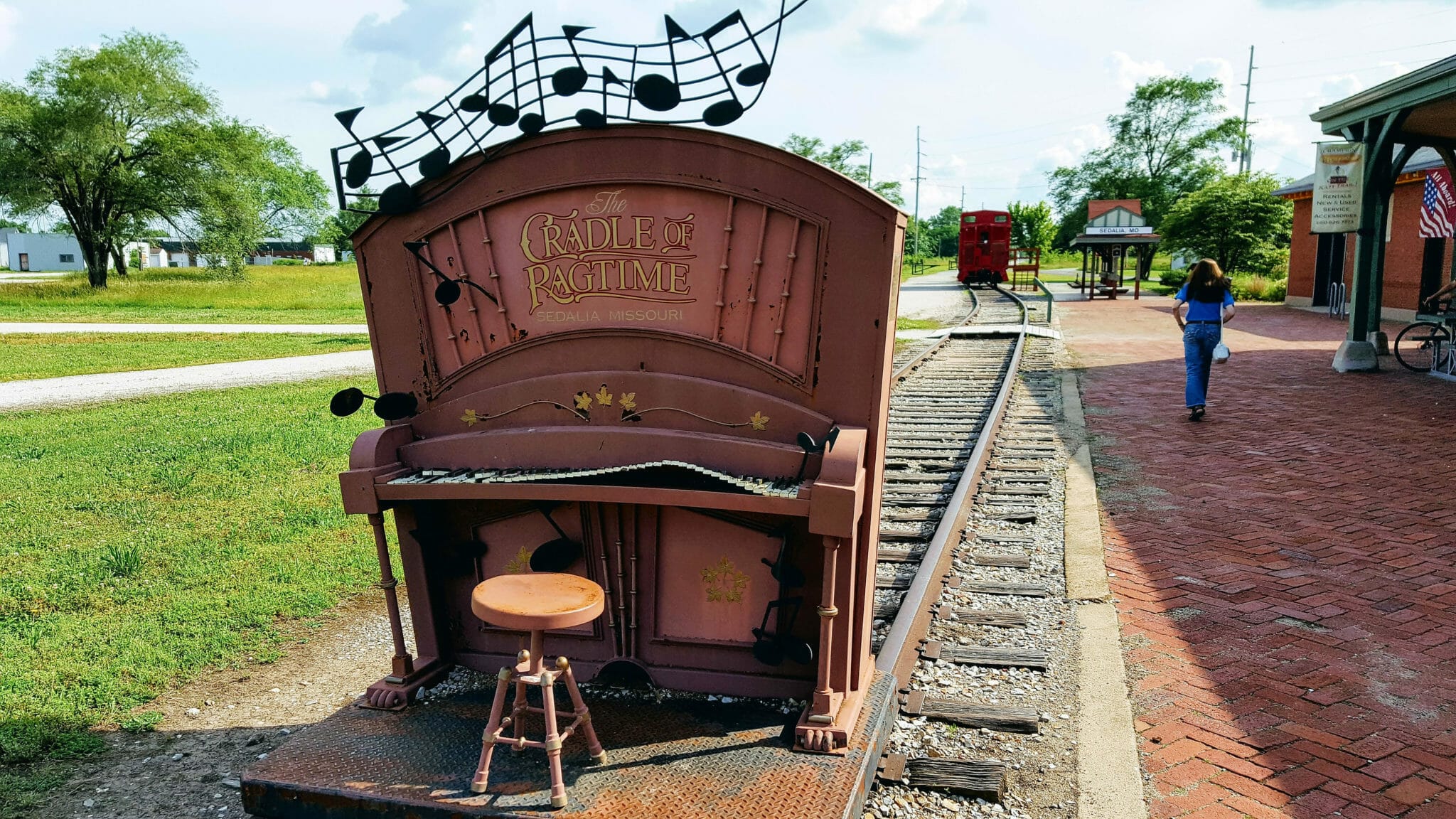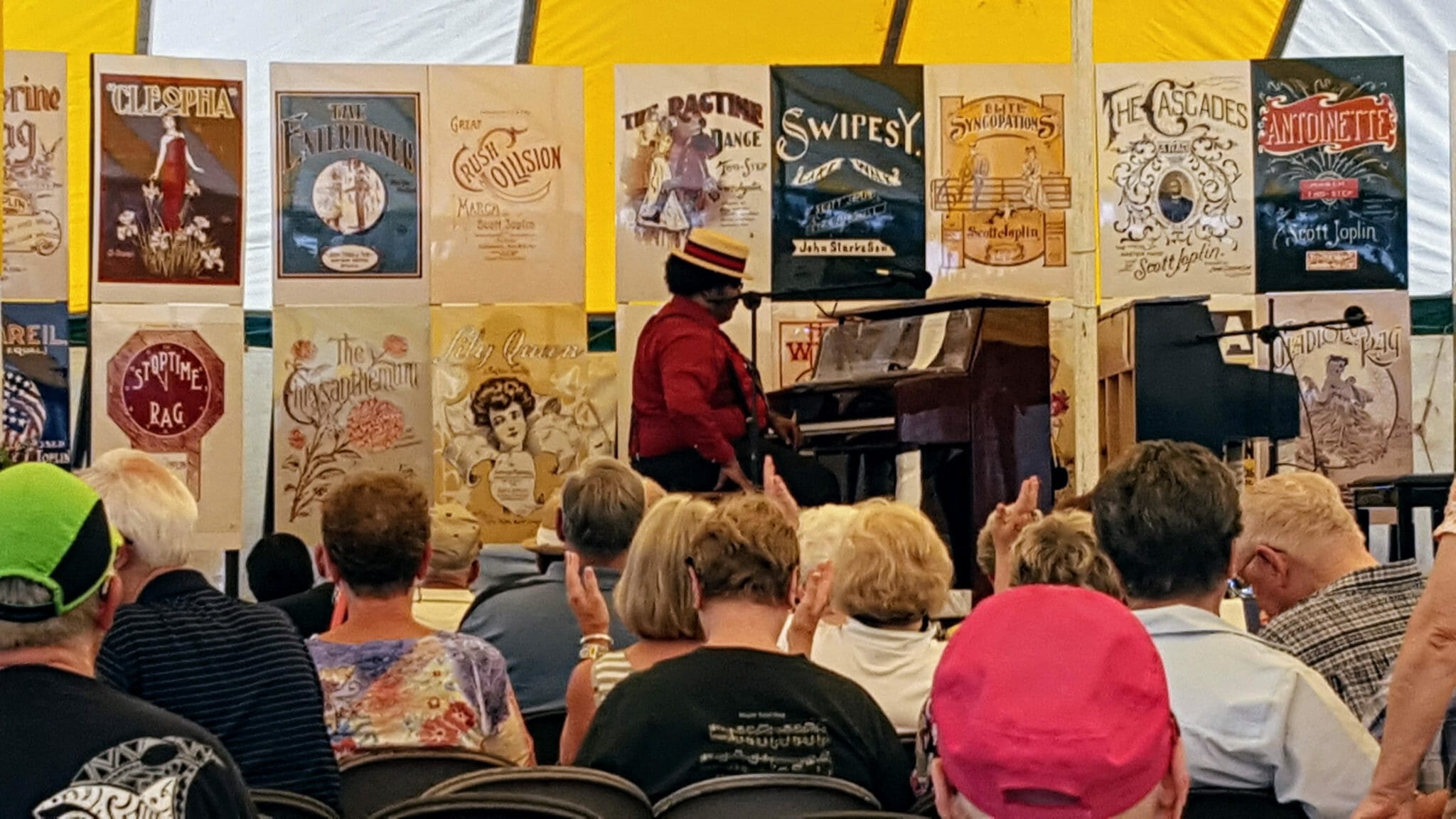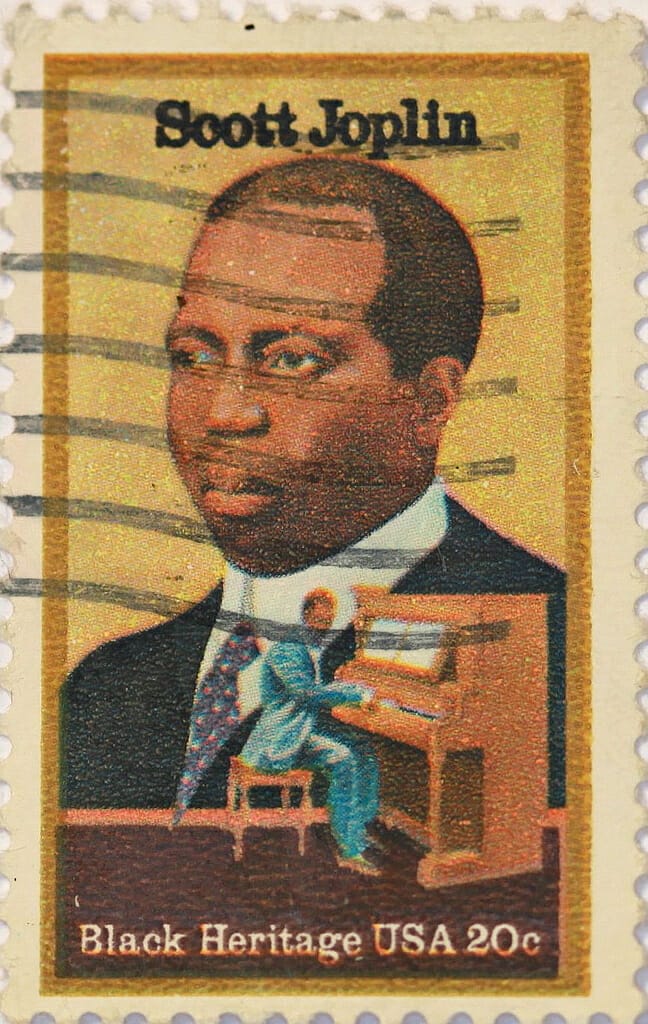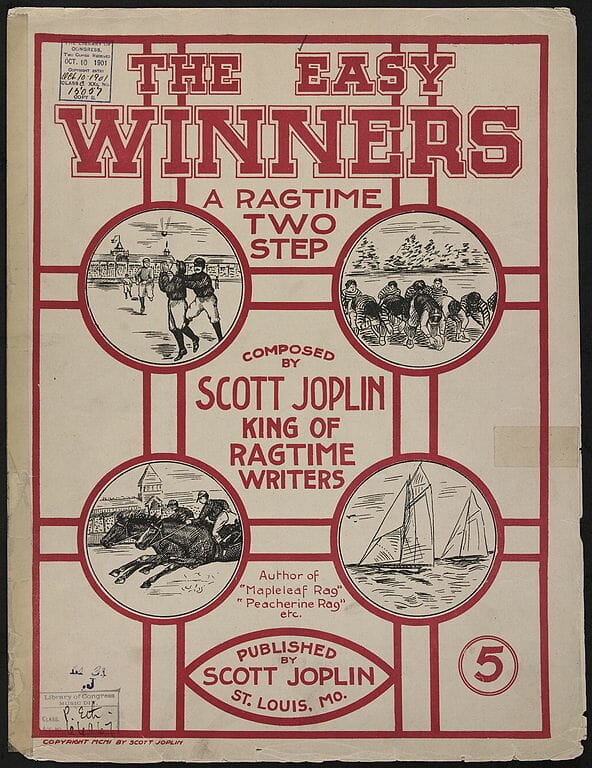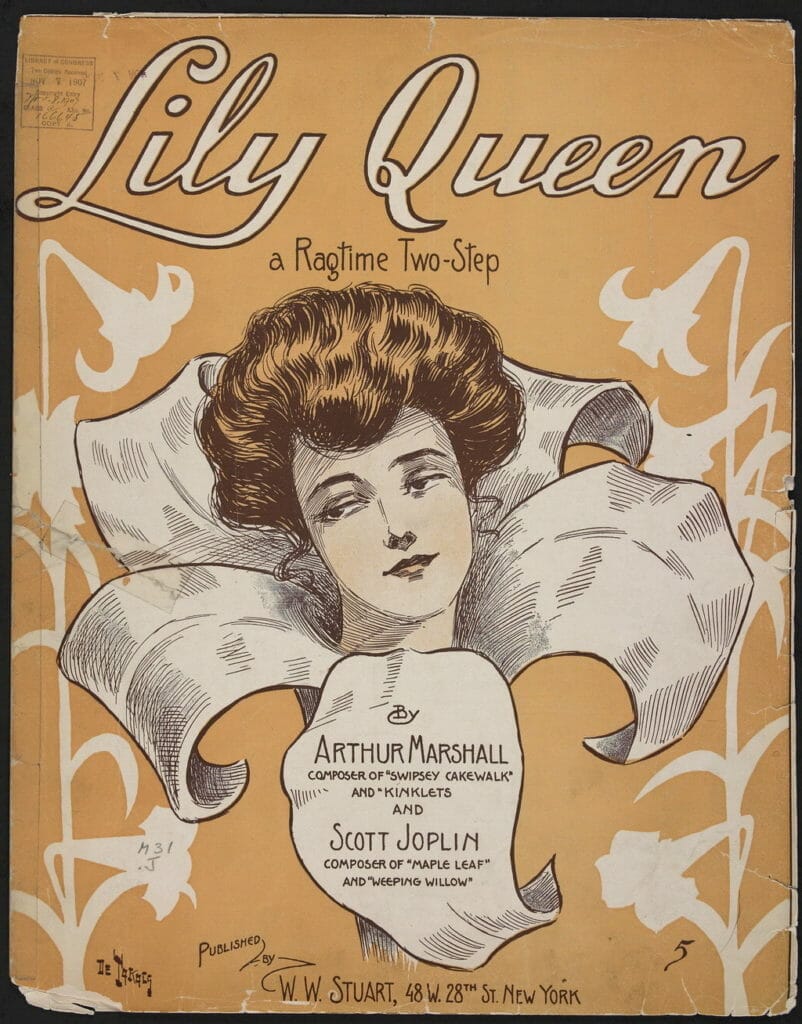Scott Joplin International Ragtime Foundation Celebrates Joplin's Music in Sedalia, MO
The streets of old Sedalia were full of the sound of old-time piano music. The sun was shining, the sky was unusually blue, and it was warm enough that no jacket was needed. The outdoor venues were each well-attended and gave opportunities for young and old piano hotshots to entertain. There were food trucks nearby selling corndogs and ice cream.
Ragtime enthusiasts from all over the world had come to Sedalia, Missouri to celebrate the music and life of Scott Joplin, the king of ragtime music. This year’s festival, under the direction of artistic director Brian Holland, was held from May 31st to June 3rd. The festival is staged annually by the Scott Joplin International Ragtime Foundation, a non-profit organization dedicated to preserving ragtime music, Scott Joplin’s contribution to it, and Sedalia’s role in its history.
Since Joplin’s death was in 1917, this year is the centennial of his too-early passing (he lived from 1868 to 1917). People came from 32 states and 3 foreign countries to the festival. More than 30 musicians performed simultaneously at free, open-air, all-day concerts staged over 4 days in 3 venues around the city of Sedalia.
Lectures and Demonstrations
There were also ticketed concerts and symposiums at the Liberty Center, a historic indoor auditorium featuring two new Steinway pianos. Richard Dowling, a performer at the festival and official Steinway artist – who plays "Searchlight Rag" in the video featured below – arranged to have the pianos brought to the festival from Schmitt Music of Overland Park, Kansas. (Over the course of the festival, Dowling even performed all 53 of Joplin's piano compositions).
Lecture-demonstrations by professional Joplin scholars and performers Scott Kirby and Dr. Edward Berlin provided enlightening insights about both Joplin and others whom he taught and inspired. We learned, for example, that Joplin also played cornet in a band and had a fine singing voice. There were open piano times at each of the outdoor venues when pianists and small ensembles, both amateur and professional, came up and performed for 20 minute slots each day.
Curious newcomers to the world of Scott Joplin got a quick course on ragtime. They learned, for example, that much of his music was intended for dancing, and that Joplin was known as "the king of ragtime" even during his own lifetime. For those of us who already knew a lot about Scott Joplin, there was still plenty of new material in these presentations to consider. For instance, Joplin was influenced by Jewish music while living in New York and incorporated this minor key sound into at least one of his rags, the “Magnetic Rag,” which was the last one he published.
What is ragtime music?
One might wonder, what is ragtime and why is it important in American music history?
Ragtime refers to ragged rhythms called syncopation – the short-long, short-long rhythm in popular music – which have been passed down from Joplin and his contemporaries to our time through the evolution of ragtime to blues, gospel, jazz, and finally rock.
Rags are genuinely, completely American. Without his 44 piano rags, 9 other piano works, and opera, Treemonisha – all composed by Joplin during his short life, full of struggle and anguish – the history of popular American music might have turned out differently. Other composers, such as Ernest Hogan and James S. Scott, also worked on this particularly African-American art form, and their music was done justice at the festival. Joplin’s tunes, however, are not only the most recognizable rags, but also the compositions that define the genre.
This is ragtime – we find our spirits lifted up; we find ourselves tapping our foot to the very obvious beat; any boredom is taken away and any sadness is temporarily lifted. It’s not only that you know it when you hear it – you know it when you feel it.
Other popular music composers of the time might have one or even two enjoyable themes in a music piece, but Joplin typically has three or four themes per rag, whose emotional reach ranges from the fun to the optimistic to the consoling.
Joyful Music, Painful History
During his time, Joplin’s music was played by him (and others) in many a club, bar or restaurant, starting out in the Maple Leaf Club, an African-American social club in Sedalia. This is how the world was given the ever-popular “Maple Leaf Rag,” which, when published in 1899, put Joplin on the map and earned him early recognition and popularity.
For this writer and other die-hard devotees of Joplin’s music, it was thrilling to be able to see a copy of the original publishing contract and other historic items at Maple Leaf Park, one of the venues for festival performances – right across the street from the site of the original Maple Leaf Club!
The contract specifically stated that publisher Mr. John Stark would help publish “Maple Leaf Rag” since “Mr. Joplin lacked the funds to publish it.” Mr. Stark made a career from selling Joplin rags, especially “Maple Leaf Rag.” Joplin himself was given a penny per sale, after the original $10!
It became an uneasy professional relationship that eventually ended in 1907 with a falling out. Amazingly, John Stark’s great-great-grandson, Hugh, was there at the Katy Depot, Sedalia’s restored train station, and spoke to us for an interesting hour about his family and some memorabilia from their relationship with Joplin.
A few of Joplin’s best-known rags – heard multiple times by seated folks at the festival but generally used as dance music in his day – include “The Entertainer,” “Maple Leaf Rag,” “Ragtime Dance,” “Pineapple Rag,” and “The Cascades,” to name a few.
Cakewalk
If there is one Ragtime composition that most made Joplin's dance music reputation (other than “Maple Leaf Rag”) it was “Swipesy Cakewalk.” This was actually written by one of Joplin's best students, the young Arthur Marshall. Joplin, living with the Marshall family at the time, wrote one of the sections of “Swipesy” to help out his student.
This rag was popular not only in African-American circles but also in white high society. Everyone, Black and white, dressed up in their best attire for a cakewalk dance. The “Swipesy Cakewalk,” like most ragtime compositions, lifts people up close to the moon and urges them to get up and dance! With ragtime, Joplin found a refreshing, rhythmic and uplifting piano style right and ripe for his time. The attendance by white people at African-American cakewalks in which Joplin performed exposed the larger and more moneyed community to his music. Contemporary observers, not unkindly, said Joplin wasn’t a flashy piano player but a rather conservative one instead. His music provided enough flash on its own.
Cakewalk dances were probably key to Joplin getting hired by white folks for their parties and events. It was widely known that Joplin’s music was the most likely to make their event a success. Still, Joplin scraped by financially and was probably never paid on a level he deserved.
Eventually Joplin moved on to work in St. Louis and then New York. Though he deeply desired and worked hard to be accepted by the white classical music establishment in New York, it was not to be. He died at the age of 49, generally forgotten, until the 1973 crime thriller The Sting came out and featured 6 of his rags in its soundtrack. Since this popular movie, Joplin rags have continued to grow and flourish.
“Tickled to Death”
This celebration of ragtime joy also included performances of some of the non-Joplin tunes from his time, like “Pickles and Peppers,” “This is the Blues,” and “Tickled to Death.”
How aptly named this last tune is to summarize the ragtime musical genre. On one level, Tickled to Death is the pianist’s projection of what the piano keys are feeling as they sing out the pianist’s rag. For most, though, it’s a spot-on description of what an immersion in ragtime music at the yearly Joplin Festival feels like.
HIGHLY RECOMMENDED
Next year’s Scott Joplin festival is planned for early June and will be held in Sedalia. For more information, bookmark www.scottjoplin.org
About the Author:
Mark Lindeblad is a working pianist and bassoonist in Chicagoland. He received the Bachelor's of Music performance degree, bassoon major, piano minor from Wichita State University in 1978 and the Master's of Music performance degree in bassoon from Roosevelt University in 1983 in Chicago. While doing piano accompanying was always happening on the side from high school and college years, it stepped up to be Mark’s primary occupation in the 1990's. Today he is a piano accompanist at Glenbard South High School, and plays principal bassoon in the Southwest Symphony, and also finds time for about 20 private students studying either bassoon or piano. For more information, visit Mark Lindeblad’s website: www.markspianostudio.com

